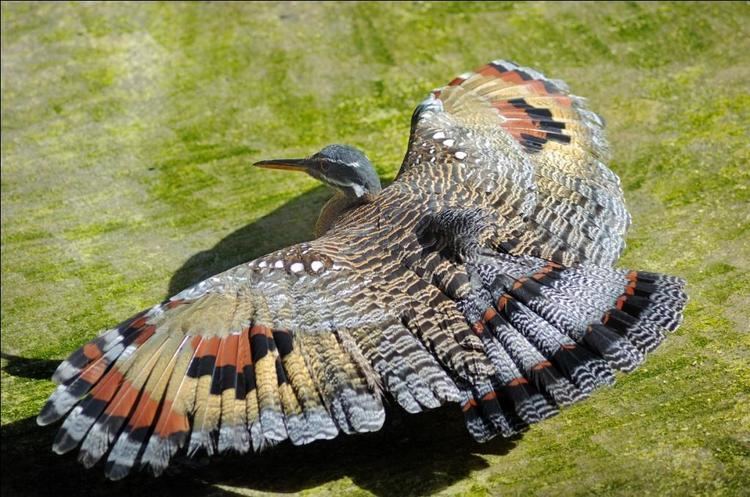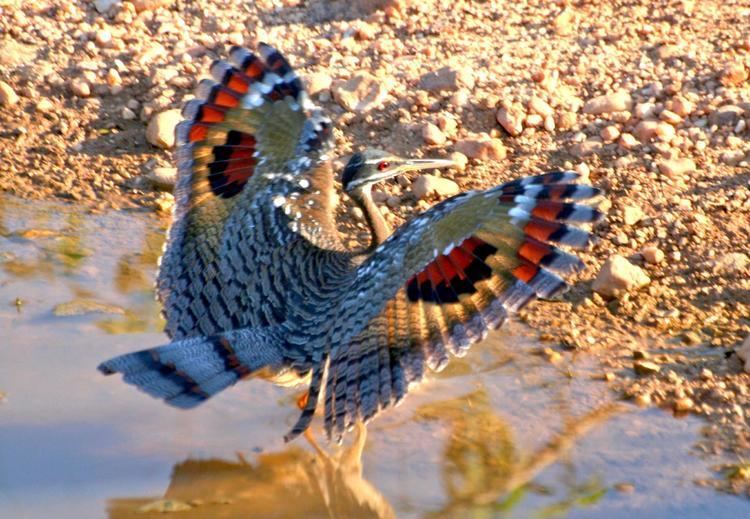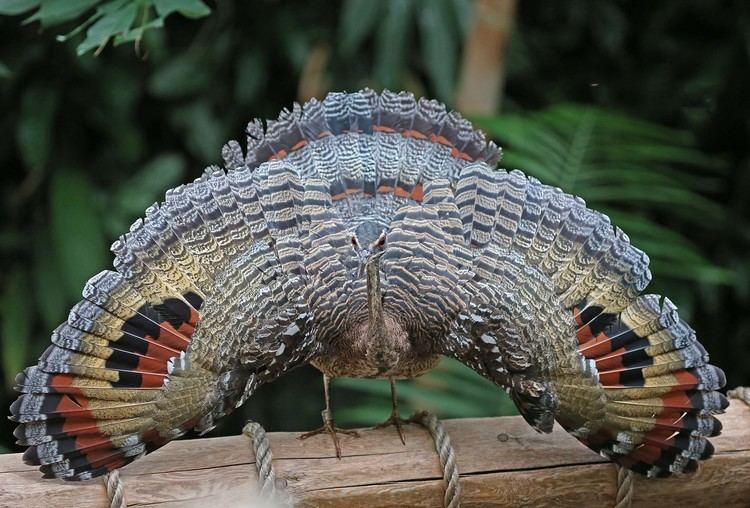Genus EurypygaIlliger, 1811 Phylum Chordata Rank Species | Infraclass Neognathae Scientific name Eurypyga helias Higher classification Eurypyga | |
Family EurypygidaeSelby, 1840 Similar Heliornithidae, Eurypygiformes, Jacamar, Puffbird, Limpkin | ||
Sunbittern wmv
The sunbittern (Eurypyga helias) is a bittern-like bird of tropical regions of the Americas, and the sole member of the family Eurypygidae (sometimes spelled Eurypigidae) and genus Eurypyga. It ranges from Guatemala to southern Peru, showing three extant subspecies. The sunbittern shows both morphological and molecular similarities with the kagu (Rhynochetos jubatus) of New Caledonia, indicating an gondwanic origin, both species being placed in the clade Eurypygiformes.
Contents
- Sunbittern wmv
- Sunbittern eurypyga helias
- Taxonomy
- Subspecies
- Description
- Behaviour and ecology
- References

Sunbittern eurypyga helias
Taxonomy
The sunbittern is usually placed in the Gruiformes, but this was always considered preliminary. Altogether, the bird is most similar to another bird that was provisionally placed in the Gruiformes, the kagu (Rhynochetos jubatus). Molecular studies seem to confirm that the kagu and sunbittern are each other's closest living relatives and have a similar wing display. They are probably not Gruiformes (though the proposed Metaves are just as weakly supported). Altogether, the two species seem to form a minor Gondwanan lineage which could also include the extinct adzebills and/or the mesites, and is of unclear relation to the Gruiformes proper. Notably, the kagu and mesites also have powder down.
Subspecies

There were formerly two species (E. helias and E. major), but now E. helias is divided into three subspecies differentiated by plumage characters and size. The three subspecies are apparently allopatric.

Description

The bird has a generally subdued coloration, with fine linear patterns of black, grey and brown. Its remiges however have vividly colored middle webs, which with wings fully spread show bright eyespots in red, yellow, and black. These are shown to other sunbitterns in courtship and threat displays, or used to startle potential predators. Male and female adult sunbitterns can be differentiated by small differences in the feather patterns of the throat and head. Like some other birds, the sunbittern has powder down.

The sunbittern has a long and pointed bill, a short hallux as in shorebirds and rails, and orange-yellow feet in the lowland individuals in the east of the Andes, while those of the Central American Subspecies (E. h. major) are much redder.
The sunbittern's range extends from Guatemala to Brazil, in the humid Neotropical forests, generally with and open understorey and near rivers and streams. The species may also be present in southern Mexico. It has been traditionally reported from the Atlantic slope of Chiapas, but no specimens are known and there have been no recent records.
Behaviour and ecology
The sunbittern is a non-migrant bird that is normally found foraging on the ground and scratching for insects. They are cryptic birds that display their large wings, that exhibits a pattern that resemble eyes, when they feel threatened. Sunbitterns start nesting in the early wet season and before it starts they make flight displays 10–15 m high in the forest canopy. They build open nests in trees, and lay two eggs with blotched markings. The young are precocial, but remain in the nest for several weeks after hatching.
